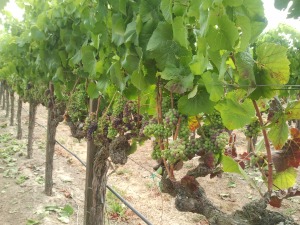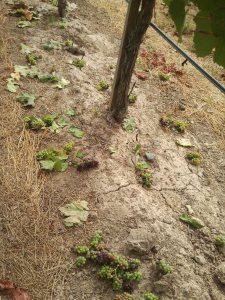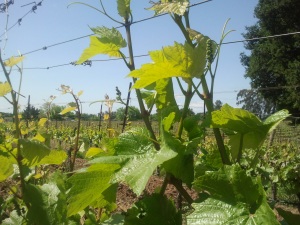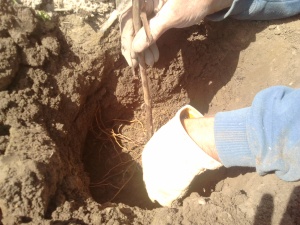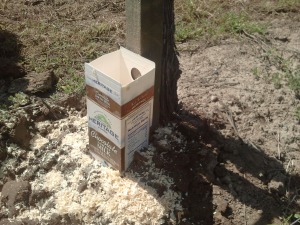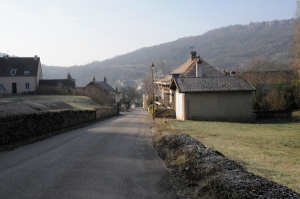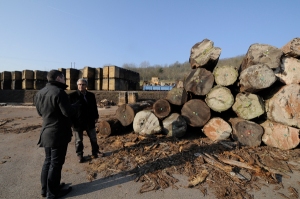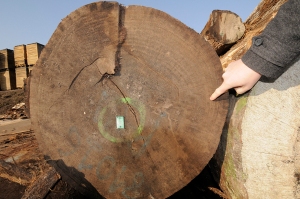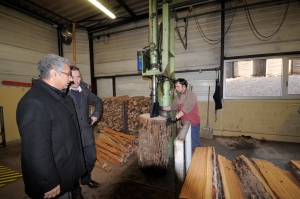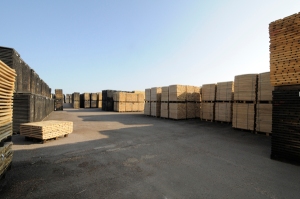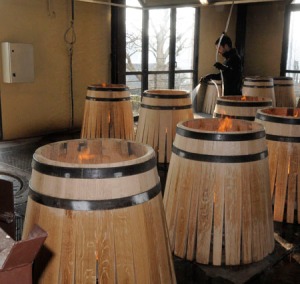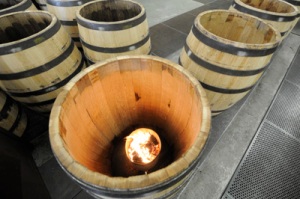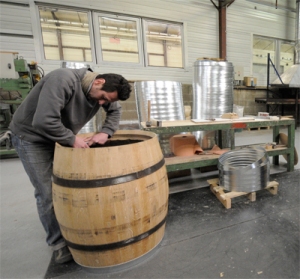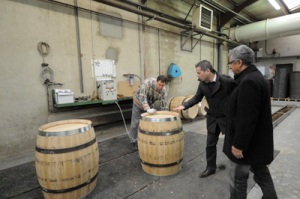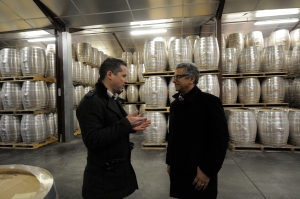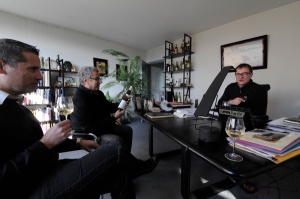December 3, 2012
Stomping Girl Holiday Wine Tastings
Posted by stompinggirl under Wine Tasting | Tags: pinot noir, Wine Tasting |Leave a Comment
November 5, 2012
Thanksgiving and Pinot
Posted by stompinggirl under Holidays, pinot noir, Stomping Girl | Tags: pinot noir, Stomping Girl, Thanksgiving |Leave a Comment
We are in the right business this time of year because no other wine goes better with turkey and savory side dishes than Pinot Noir and Chardonnay. While our Chard is not ready for release (darn!,) our award-winning Pinot can grace your Thanksgiving table this year:
- Our elegant Silver Medal winner 2010 Russian River, which is almost sold out, will complement the heck out of the turkey.
- Our 2009 Corona Creek will stand up to the hearty mouth watering sausage-stuffed mushrooms we recommend below.
- Our versatile, well-balanced Silver Medal winner (and excellent price/quality ratio per Prince of Pinot) 2010 Unhinged is perfectly suitable for dinner but also an excellent casual partner for next day turkey and stuffing sandwiches.
A couple of our favorite Thanksgiving recipes:
- Ina Garten’s mouthwatering Sausage-stuffed Mushrooms
- Sweet Potato Buttermilk Rolls from Pinch my Salt
October 9, 2012
Harvest 2012 Photos
Posted by stompinggirl under fermentation, pinot noir, Pressing, Russian River | Tags: Pressing, Stomping Girl Wines |Leave a Comment
The 2012 harvest has come to an end…the fruit picked under stellar conditions, the fermentations completed without a hitch and the wine barreled down for the winter. Nearly everyone is celebrating Northern California’s “epic” harvest, the biggest in years, including us and we’ve shared some photos of here:
September 20, 2012
Harvest 2012 Update
Posted by stompinggirl under Carneros, growing, harvest | Tags: Carneros, Grape harvest, pinot noir, Russian River Pinot Noir, Stomping Girl Wines |Leave a Comment
I write this awaiting arrival of 5 tons of Pinot Noir from Beresini Vineyard in Carneros. Uzi woke at 3:50 this morning to oversee the pick while I slept to a more normal hour and drove to meet him and the fruit at the winery. I beat them both here so am taking advantage of the moment to write this in our traveling office/dining room/sometimes bedroom (aka my car.)
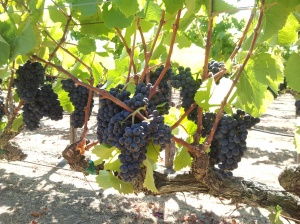 The reason he and the fruit are a bit late, and why growers and winemakers across Sonoma and Napa are celebrating, is that the perfect fruit set we had this spring and a steady stream of pleasant weather has led to an incredibly bountiful harvest. The vineyard produced more fruit than it has in years and they needed more time and more bins to pick it. The yield (tons/acre) is still low compared to most vinearyds, but for Beresini Vineyard this year is a jack pot! I think we’ll finally get as much as we asked for. And best of all, this year’s decisions on when to pick are being decided on ripeness not impending rain storms or heat spikes that played a role in the last 2 vintages.
The reason he and the fruit are a bit late, and why growers and winemakers across Sonoma and Napa are celebrating, is that the perfect fruit set we had this spring and a steady stream of pleasant weather has led to an incredibly bountiful harvest. The vineyard produced more fruit than it has in years and they needed more time and more bins to pick it. The yield (tons/acre) is still low compared to most vinearyds, but for Beresini Vineyard this year is a jack pot! I think we’ll finally get as much as we asked for. And best of all, this year’s decisions on when to pick are being decided on ripeness not impending rain storms or heat spikes that played a role in the last 2 vintages.
We are so happy to bring in Pinot Noir from Beresini and Lauterbach Vineyards for the 4th year in a row and Chardonnay from Hyde Vineyard for the 2nd. We just bottled our 2011s from each of these 3 vineyards and consider ourselves very lucky to have ongoing relationships with these dedicated growers.
And now it’s time for us to roll up our sleeves, get sticky and dirty, keep our traveling office stocked and go make some wine. Hope your fall is just as happy and exciting!
August 30, 2012
Oh yeah, Hyde Chardonnay
Posted by stompinggirl under Bottling, Carneros | Tags: Chardonnay, Hyde Vineyard, Stomping Girl Wines |Leave a Comment
A picture is worth a thousand words…so I’ll just say a few:
Our 2011 Hyde Vineyard Chardonnay was just bottled and it is just amaaazing, can’t wait to release it!
August 9, 2012
Green Harvest (Dropping Fruit)
Posted by stompinggirl under harvest | Tags: Grape harvest, pinot noir, Stomping Girl, Vineyard |Leave a Comment
In regions where there is plenty of sunlight, fertile soil and irrigation, grapevines can end up producing too much fruit. This is the case in many winegrowing regions in California. In response, we typically remove a percentage of the clusters around this time of year–after they are fully formed but long before they are ripe. Removing a portion of these immature clusters allows the vine to put all of its energy into the remaining clusters and leads to a more even ripening process and improved flavor compounds.
Removing fruit may seem detrimental since it decreases our yield and, ultimately, the amount of wine produced. However, our intention is better quality wine, not more wine. Green harvest allows us to achieve better quality wine by creating balanced vines with the right cluster-to-canopy-size ratio and more evenly ripened clusters at harvest.
Below are some recent pictures of a walk through dropping fruit, when veraison (the turning of the grapes from green to red) is 20-30% complete. All but 2 clusters are removed from shoots that have extended beyond the top wire, all but 1 cluster are removed from shoots that extend below the top wire and all the clusters are removed from shoots that are too short to reach the middle wire. When veraison is done, we do a second round and drop all the clusters that did not ripen properly so that we end up with an evenly ripened crop.
May 16, 2012
Spring in the vineyard
Posted by Uzi under Carneros, growing, inspiration, planting, Spring, Stomping Girl, vineyards | Tags: Carneros, Pinot planting, Stomping Girl vineyard, Vineyard |Leave a Comment
I always say that spring is the second best time of the year (the first is harvest in the fall.)
Watching the new shoots reach for the sun, performing their annual miracle painting the vineyard green, sprouting from the brown, dead looking trunks, never ceases to amaze me.
Tiny baby clusters appear and the leaves open up, spread and gorge on the sun.
This is also the time of the year when planting replacement vines happen. Some of the old vines are too tired and can barley produce a cluster or two each year. We plant new, young vines in the field, right next to the old ones. It will be three years before the new vines will produce any meaningful fruit, under the watchful eyes of their elders.
December 1, 2011
Holiday Winery Pop Up Saturdays in December
Posted by stompinggirl under Holidays, Local Wineries, Wine Tasting | Tags: Wine Tasting |Leave a Comment
October 6, 2011
Harvest 2011
Posted by stompinggirl under Carneros, other, winemaking | Tags: Grape harvest, pinot noir |Leave a Comment
